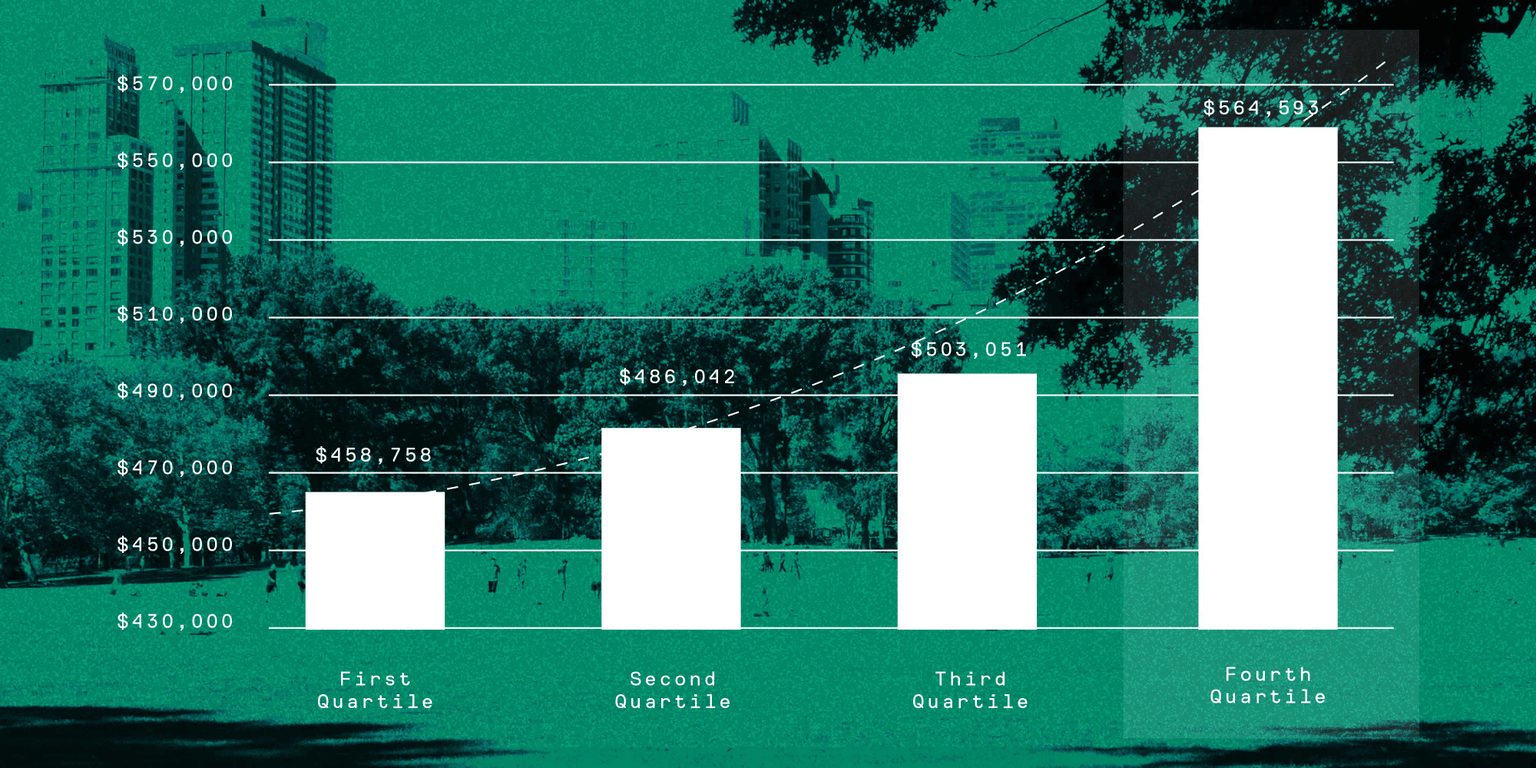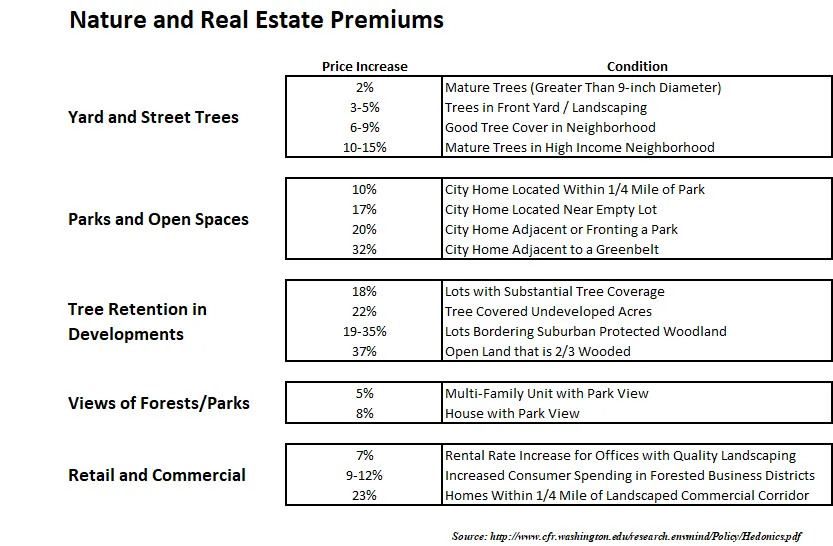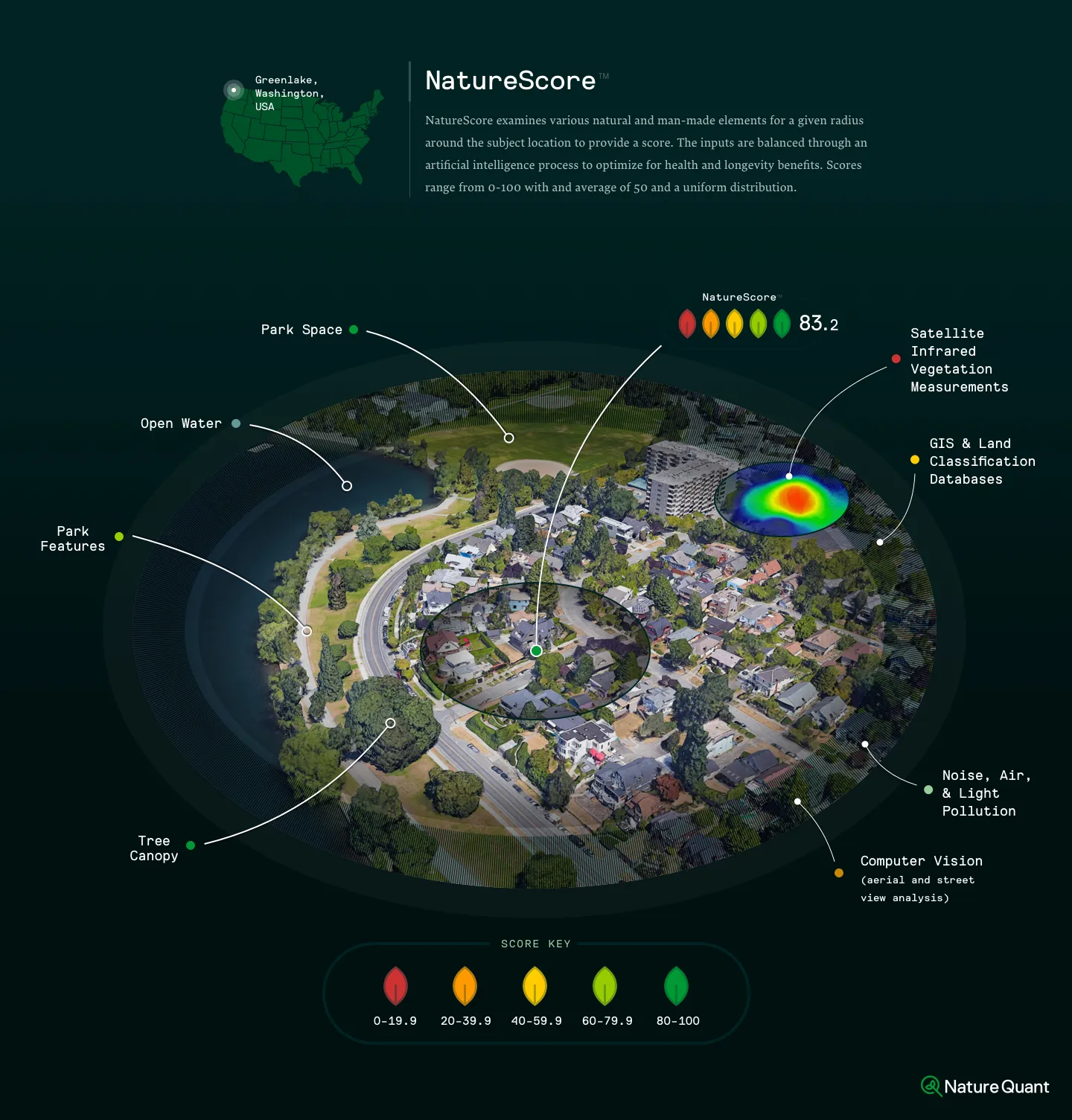Urban Nature and Societal Value
How does a Community Value Nature?

Key Points
- Homes and commercial properties near urban green spaces consistently demand price premiums.
- Economists are undertaking the difficult task of valuing the indirect and intangible benefits of green spaces, like improvements to eco-system, beauty, and psychological well-being.
Urban Nature and the Question of Value
Valuation is crucial in our society. What society has not quantified cannot be easily factored into important public policy decisions. Psychologists and economists agree that human beings adjust their behavior based on the metrics applied to them. Anything measured will drive a person to optimize their score on that metric. What one measures is what one gets. This phenomenon plays out time and again in research studies. Give out frequent flyer miles, and travelers will schedule absurd itineraries to optimize their miles.
But what about something as complicated and dynamic as nature? When markets do not exist for a resource, efforts are made to derive a monetary value. Natural settings, ranging from wildland to urban, offer many beneficial life-supporting functions. Nonmarket valuation techniques need to develop to represent the natural environment in the decision-making calculus within communities. In addition to providing clear price premiums and health benefits, nearby nature can offer aesthetic appeal; provide visual and sound privacy; and improve air quality. It can also reduce urban heat islands, reduce energy consumption by providing shade and wind barriers, and even reduce the transmission rate of contagious diseases.
Park and natural area developments can be expensive in urban areas. If the value of their intangible benefits are not counted, hard costs become powerful disincentives to invest in natural capital. In other words, without some indicator of societal value, there is a weak financial incentive to consider urban nature in land-use decisions and capital investment budgets, especially in the public sector.
One challenge is that consumption by one individual of city trees and open spaces does not reduce the amount of that public good that remains available for consumption by others. Communities cannot generally charge individuals for looking at a beautiful tree-lined street on a per-use basis. Having a tool for estimating the value of nature could help local governments to weigh costs against returns from development or to prioritize payments for green versus gray infrastructure.
Nature valuation would also be helpful in the private sector. For example, the costs associated with planting trees during site preparation could be offset by higher purchase prices for the property. According to the Council of Tree and Landscape Appraisers, a single mature tree can add from $5,000 to $10,000 to the value of your home. The American Power Association estimates that effective landscaping can reduce a home cooling bill by up to 50% by providing shade. American Forests claims that trees placed appropriately around one’s house can reduce the need for heating by 20% to 50% by blocking cold winds. These benefits can quickly translate into meaningful monetary measurements.
Although the value of nature to property owners and communities is rarely precisely known, its existence can be detected indirectly via hedonic pricing models. Hedonic pricing examines consumers’ willingness to pay for comparable items. Obtained from indirect inferences about spending and prices, it attempts to capture the proportion of property prices that reflect the non-use value of natural elements.
Based on many completed hedonic pricing studies on real estate and near-by nature, one can estimate how a change in a natural feature, such as adding yard trees or being closer to a park, while holding other property characteristics constant, changes property value.
As demonstrated in the summary table below, natural elements (from trees to greenbelts) consistently provide meaningful price premiums.

These pricing premiums offer a clear advantage to private real estate owners, but governments could also benefit from the increased tax revenue that boosted property values can provide. While a city planner may categorize planting trees along sidewalks as an expense, the trees should also be viewed as a driver of future city income based on increased property values.
The lack of an accessible tool has largely prevented these findings from being used in most real estate analytics, valuations, and screening methods. However, a new tool is available to solve this dilemma: a NatureScore®.
NatureScore® can identify and assess the natural elements around any specified real estate parcel for valuation and comparison purposes. Proprietary research using NatureScore® techniques and home sales in 2019 has shown up to 50% increases in property values for some regions (with an average of 15%) when comparing the upper and lower quintile of comparable homes by NatureScores® (see www.naturequant.com for more detail).

While placing a value on nature to a society is an impossible task, quantifying the volume of nature for a given location is a start. From a quantified position, we can more easily track nature’s public health and environmental impacts, as well as economic value. A reliable measure of nature facilitates more informed public discussions about urban forest investment and stewardship.